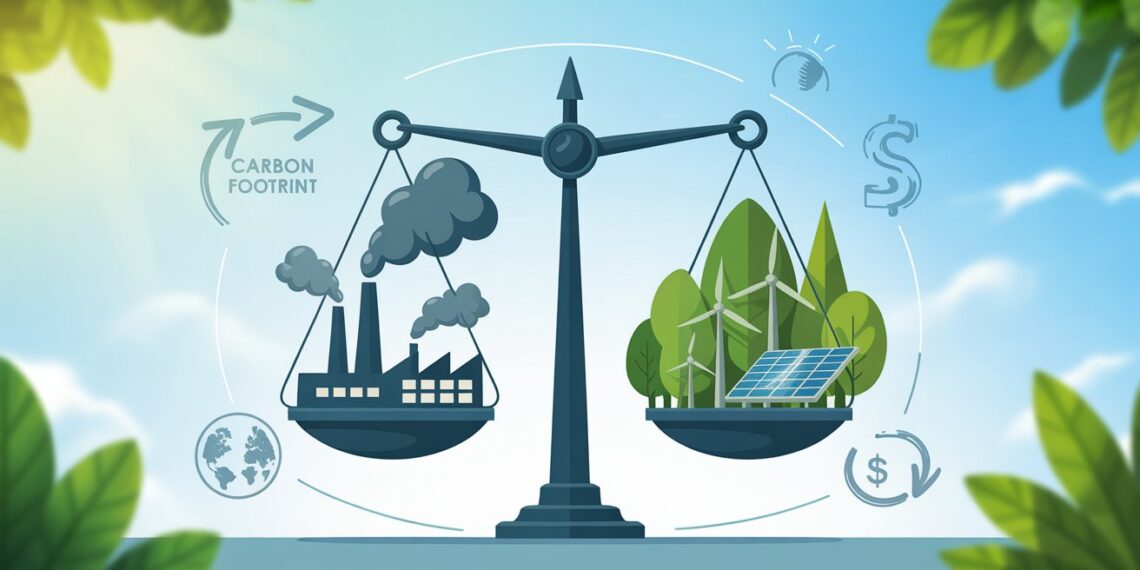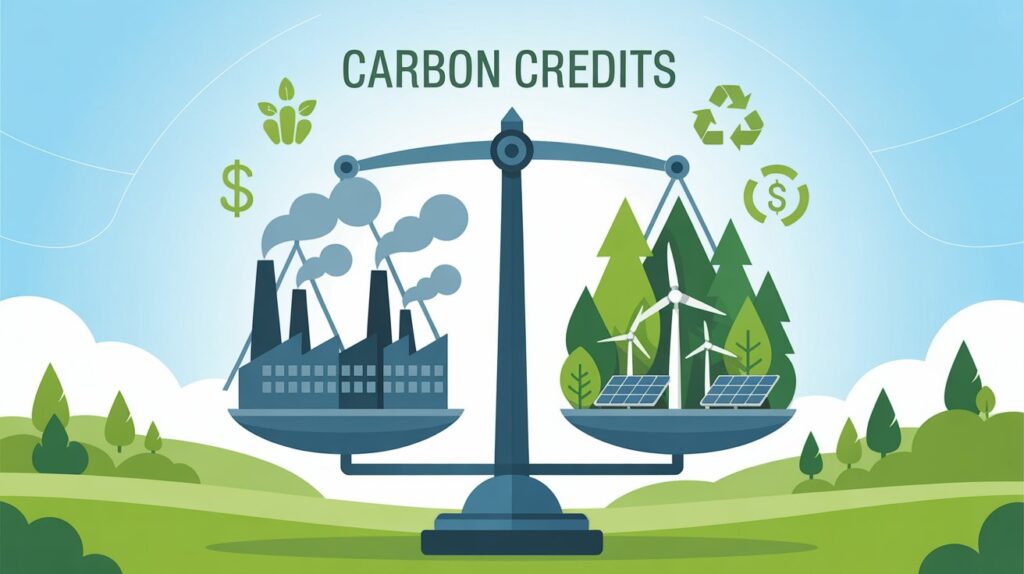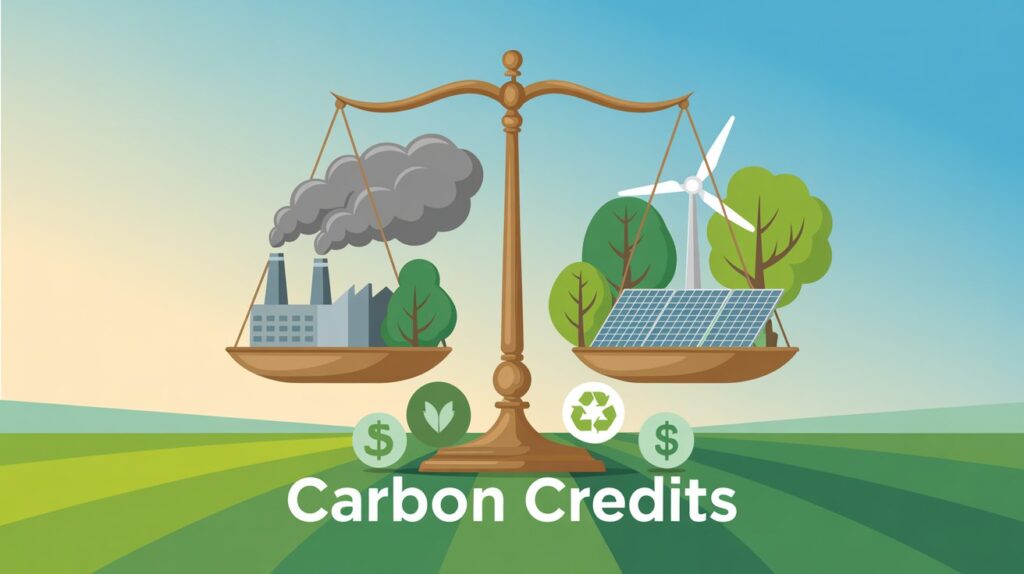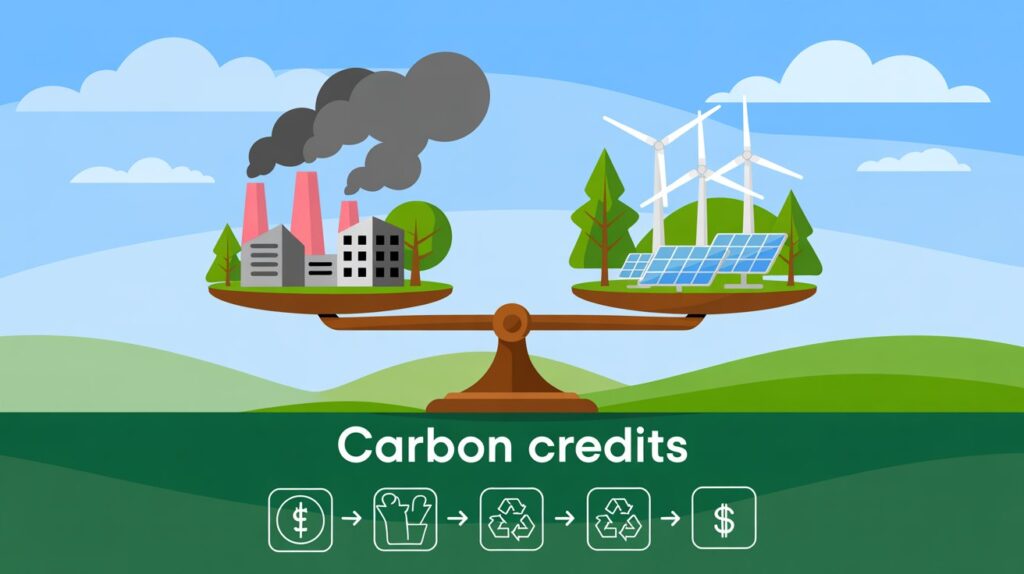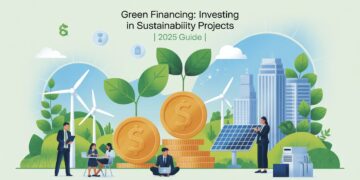Climate change is no longer a distant concern—it is a daily reality with profound impacts on weather patterns, economies, ecosystems, and communities worldwide. From record-breaking heatwaves to intensifying storms, the cost of inaction grows higher each year. Amid these challenges, governments, corporations, and individuals are urgently searching for tools to accelerate the transition toward a low-carbon future.
One of the most widely discussed mechanisms is the carbon credit. While the idea may sound abstract or even confusing at first, it plays a critical role in the global strategy to reduce greenhouse gas emissions. If you are trying to understand how it works, you’re not alone. This article—Carbon Credits Explained: A Beginner’s Guide—aims to simplify the concept, clarify common misunderstandings, and provide practical insights for both curious readers and decision-makers.
By the end of this guide, you will understand what carbon credits are, how they are created, the difference between compliance and voluntary markets, and how these instruments can be both powerful opportunities and potential pitfalls in the fight against climate change.
What Are Carbon Credits?
A carbon credit is a tradable certificate that represents the reduction or removal of one metric ton of carbon dioxide (CO₂) or its equivalent in other greenhouse gases (GHGs). Because GHGs such as methane (CH₄) and nitrous oxide (N₂O) have different warming potentials, they are converted into carbon dioxide equivalents (CO₂e) for consistency.
The idea behind carbon credits is simple but powerful:
-
If a project reduces or avoids emissions—such as a wind farm replacing a coal plant—it can earn credits.
-
If another project actively removes carbon—like planting trees that absorb CO₂—it can also generate credits.
-
These credits can then be sold to companies, governments, or individuals who want to balance their own emissions.
Each credit essentially represents a verified climate service, connecting financial markets with environmental outcomes.
Carbon Credits vs. Carbon Offsets vs. Carbon Removals
Although often lumped together, these terms are not identical:
-
Carbon Credits: The tradable certificates themselves, quantified as one ton of CO₂e reduced or removed.
-
Carbon Offsets: The act of using credits to compensate for emissions elsewhere—for example, offsetting a flight by purchasing credits from a forest project.
-
Carbon Removals: Specific projects that pull carbon out of the atmosphere, either naturally (reforestation, soil sequestration) or technologically (direct air capture).
Understanding this vocabulary matters because it helps clarify whether a company is actually removing carbon or simply avoiding future emissions.
How Do Carbon Markets Work?
Carbon credits exist within two broad categories of markets: compliance markets and voluntary markets.
Compliance Carbon Markets
Compliance markets are created by government regulation, usually through cap-and-trade systems.
-
Cap: Governments set a limit on total emissions for a sector or country.
-
Trade: Companies are allocated or must purchase allowances. Those who emit less can sell excess allowances, while those exceeding limits must buy more.
Examples of compliance markets:
-
European Union Emissions Trading System (EU ETS): The world’s largest and most established cap-and-trade program.
-
California’s Cap-and-Trade Program: Covers major sectors like power generation and transportation fuels.
-
China’s National ETS: A growing system that started with the power sector and is expanding.
Compliance markets ensure accountability through strict regulations, but they also face criticism for loopholes, lobbying, and uneven enforcement.
Voluntary Carbon Markets (VCMs)
Voluntary markets allow businesses, organizations, and individuals to purchase credits to offset their emissions beyond regulatory requirements. Unlike compliance markets, participation is optional.
-
Corporations use them to meet net-zero pledges.
-
Airlines use them to offer passengers the option to offset flights.
-
Consumers use them to balance personal carbon footprints.
While voluntary markets are growing quickly—reaching billions in annual value—they are also under scrutiny for inconsistent quality standards and the risk of greenwashing.
How Are Carbon Credits Created?
Generating carbon credits is not as simple as planting trees or building a solar farm. The process requires rigorous steps to ensure credibility and transparency:
-
Project Design
-
Developers outline activities, expected carbon reductions, and methodologies for measurement.
-
-
Validation
-
Independent auditors confirm that the project design meets the chosen certification standard.
-
-
Implementation & Monitoring
-
The project is implemented and monitored for performance against projections.
-
-
Verification
-
Third-party auditors assess actual emission reductions or removals.
-
-
Issuance of Credits
-
Certification bodies (like Verra or Gold Standard) issue verified credits to the project developer, which can then be traded or sold.
-
This rigorous process builds market confidence—but it also adds complexity and costs.
Types of Carbon Credit Projects
Carbon credits are generated by a variety of initiatives, each offering distinct climate benefits.
1. Nature-Based Solutions
-
Reforestation and Afforestation: Planting new trees to absorb CO₂.
-
Avoided Deforestation (REDD+ Projects): Preventing forests from being cleared.
-
Soil Carbon Sequestration: Using agricultural practices to store carbon in soils.
2. Renewable Energy
-
Wind Farms: Displacing fossil fuel-based electricity.
-
Solar Projects: Providing clean energy alternatives.
-
Hydropower: Small-scale dams that reduce reliance on coal or gas.
3. Methane Reduction
-
Landfill Gas Capture: Collecting methane from decomposing waste.
-
Livestock Waste Management: Converting manure methane into biogas.
4. Industrial Carbon Capture and Storage (CCS)
-
Direct Air Capture: Machines that extract CO₂ directly from the atmosphere.
-
Point Source Capture: Capturing emissions from factories and power plants.
Each type of project faces different costs, risks, and benefits. For instance, reforestation is relatively low-cost but vulnerable to wildfires, while CCS is expensive but offers permanence.
Ensuring Credit Quality
Not all carbon credits deliver genuine climate benefits. To separate high-quality credits from questionable ones, standards bodies use specific criteria. As outlined in Carbon Credits Explained: A Beginner’s Guide to Markets, Benefits & Challenges, factors such as additionality, permanence, independent verification, and the prevention of double counting are essential to ensure that credits truly contribute to meaningful climate action.
-
Additionality: The project would not have happened without credit financing.
-
Permanence: The benefit is durable (e.g., a forest stays protected for decades).
-
Verifiability: Independent monitoring and audits confirm results.
-
No Double Counting: Credits cannot be claimed by more than one entity.
-
Social and Environmental Integrity: Projects should benefit local communities and ecosystems.
Well-known certification programs include:
-
Gold Standard (founded by WWF and other NGOs).
-
Verra’s Verified Carbon Standard (VCS).
-
Climate Action Reserve (CAR).
These frameworks are vital for maintaining trust in carbon markets.
Who Buys Carbon Credits?
The demand for carbon credits is diverse and growing.
-
Corporations: Many global companies (e.g., Microsoft, Google, Shell) purchase credits to balance hard-to-abate emissions.
-
Governments: Some countries use credits to meet Paris Agreement targets.
-
Individuals: Travelers, households, and sustainability-conscious consumers offset personal emissions.
Case Example:
-
Microsoft pledged to become carbon negative by 2030. Part of their strategy involves purchasing high-quality carbon removal credits while investing in direct emission reductions.
Buying Carbon Credits: A Beginner’s Guide
If you’re new to carbon markets, here’s a simple roadmap:
-
Define Your Goal
-
Are you offsetting travel, supporting a project type, or aligning with a corporate net-zero pledge?
-
-
Choose a Platform or Marketplace
-
Examples include Verra Registry, Gold Standard Marketplace, or providers like Cloverly.
-
-
Evaluate Credit Quality
-
Look for third-party certifications and transparent project reporting.
-
-
Purchase and Retire Credits
-
Retirement ensures the credit is permanently removed from circulation, preventing resale.
-
Economics of Carbon Credits
Carbon credit prices vary dramatically:
-
$5–10 per ton for renewable energy projects.
-
$15–30 per ton for forestry and nature-based solutions.
-
$50+ per ton for direct air capture and other advanced removal technologies.
The World Bank projects that the voluntary carbon market could exceed $50 billion annually by 2030. Demand will likely rise as corporate net-zero commitments expand.
Benefits of Carbon Credits
Despite criticisms, carbon credits offer key advantages:
-
Mobilize Climate Finance: Unlock billions in funding for sustainable projects.
-
Encourage Innovation: Stimulate investment in new low-carbon technologies.
-
Provide Flexibility: Help businesses manage unavoidable emissions.
-
Support Communities: Many projects deliver co-benefits such as jobs, clean water, and biodiversity protection.
Criticisms and Controversies
However, carbon credits are not a silver bullet.
-
Greenwashing Risk: Some companies use credits to appear climate-friendly without cutting actual emissions.
-
Quality Issues: Investigations have uncovered credits from projects that failed to deliver promised reductions.
-
Equity Concerns: Communities hosting projects may not always benefit fairly.
Recent media reports have raised questions about rainforest protection projects that issued credits without verifiable reductions. These scandals highlight the need for stronger governance and transparency.
Global Policy and Regulatory Landscape
Carbon markets are increasingly shaped by international agreements and national policies:
-
Paris Agreement (Article 6): Provides a framework for countries to trade emission reductions.
-
CORSIA (Carbon Offsetting and Reduction Scheme for International Aviation): Requires airlines to offset emissions growth above 2020 levels.
-
Regional Programs: The EU ETS, California’s cap-and-trade, and China’s ETS drive compliance market activity.
As regulation tightens, voluntary markets are also moving toward alignment with global standards to ensure credibility.
Future Trends
Looking ahead, several developments will shape carbon markets:
-
Growth of Carbon Removal Technologies
-
From biochar to direct air capture, removals will become central to net-zero pathways.
-
-
Digital Transparency
-
Blockchain and digital registries will reduce fraud and improve traceability.
-
-
Increased Corporate Demand
-
With thousands of companies making net-zero pledges, demand for high-quality credits will soar.
-
-
Rising Scrutiny
-
NGOs, regulators, and media will continue to expose low-quality projects, forcing higher standards.
-
FAQs: Carbon Credits Explained
Q1. Are carbon credits mandatory?
Only in compliance markets. Voluntary markets are optional.
Q2. Do carbon credits really work?
Yes—when they are high-quality and part of a broader decarbonization plan. They should complement, not replace, emission reductions.
Q3. What’s the difference between voluntary and compliance credits?
Compliance credits are regulated by law; voluntary credits are purchased outside of legal obligations.
Q4. Can carbon credits expire?
Yes, some credits have specific timeframes for use, especially in compliance markets.
Q5. How do carbon credits affect consumers?
Consumers may see credits embedded in airline tickets, e-commerce purchases, or corporate sustainability programs.
Q6. Are all carbon credits equal in impact?
No. Projects vary in quality, permanence, and co-benefits. Always verify certifications.
Q7. Can carbon credits make a country carbon neutral?
They can help, but systemic emission reductions remain essential.
Conclusion
Carbon credits represent both opportunity and complexity in the global climate response. Properly designed and verified, they channel money into projects that deliver real environmental and social benefits. Misused, they risk undermining trust and slowing progress toward a sustainable future.
For beginners, the most important takeaway is balance: use carbon credits responsibly, prioritize direct emission reductions, and choose high-quality certified projects when offsets are necessary.
With greater transparency, innovation, and regulation, carbon credits could become a cornerstone of global climate action. As this guide—Carbon Credits Explained: A Beginner’s Guide—has shown, they are not a cure-all, but they are a crucial piece of the puzzle in building a net-zero world.

